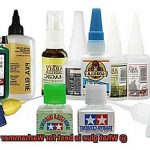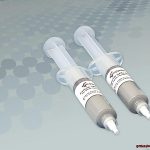Water leaks can be a real headache, causing damage to your property and draining your wallet. But what if we told you that you could fix those pesky leaks with something as simple as glue? That’s right, glue can be a cost-effective solution to your plumbing woes.
However, not all glues are created equal. To effectively seal water leaks in your plumbing system, it’s crucial to choose the right type of glue for the job. That’s where we come in – in this blog post, we’ll explore the world of ‘What glue is used for water leaks,’ providing expert tips on how to apply different types of glues to achieve optimal results.
Whether you’re a DIY enthusiast or a homeowner looking for an easy fix, this post is sure to be an eye-opener. So grab a cup of coffee and get ready to dive into the fascinating world of adhesives and plumbing solutions.
What is a Water Leak?
Contents
- 1 What is a Water Leak?
- 2 Types of Glue Used for Water Leaks
- 3 Epoxy: The Most Commonly Used Glue for Water Leaks
- 4 Silicone Sealant: Flexible Adhesive for Sealing Gaps and Cracks
- 5 Plumber’s Putty: A Soft and Pliable Material for Sealing Pipes and Fittings
- 6 Specialized Glues and Adhesives for Specific Types of Leaks
- 7 PVC Cement: For Fixing PVC Pipe Leaks
- 8 Teflon Tape: For Threaded Connections
- 9 Conclusion
Simply put, a water leak refers to the unintentional escape of water from a plumbing system. These leaks can occur for a variety of reasons, including corrosion, high water pressure, faulty valves, or damaged pipes.
There are two types of water leaks: visible and invisible. Visible leaks are easy to spot as they are visible to the naked eye, such as dripping faucets or running toilets. Invisible leaks, on the other hand, can be more challenging to detect as they occur within walls or underground. Signs of invisible leaks may include unexplained increases in water bills, damp spots or stains on walls or ceilings, and decreased water pressure.
When it comes to fixing water leaks, choosing the right adhesive is crucial. Epoxy is a popular two-part adhesive that creates a strong bond capable of withstanding water and other liquids, making it suitable for fixing leaks in various materials such as plastic, metal, and ceramic. Silicone sealant is another flexible adhesive that is useful for sealing gaps and cracks in materials like glass, metal, and plastic. Plumber’s putty is ideal for larger leaks or cracks in pipes or plumbing fixtures where there is high water pressure.
It is crucial to address water leaks promptly to prevent further damage to the plumbing system and property. Failure to fix a leak can result in mold growth, structural damage, and higher utility bills. Homeowners should regularly inspect their plumbing system for signs of leakage and contact a professional plumber if they suspect a leak.
Types of Glue Used for Water Leaks
Fortunately, there are various types of glue and adhesives available to fix the problem. It’s essential to choose the right type of glue for the job. Let’s dive into the different types of glue used for water leaks.
Epoxy glue is a two-part adhesive that is known for its strength and durability. It sets quickly and can withstand high temperatures and pressures. Epoxy glue is perfect for sealing leaks in pipes, tanks, and other surfaces that come into contact with water. It can be used on various materials such as plastic, metal, and ceramic.
Polyurethane glue is another waterproof adhesive that expands as it dries. It’s ideal for sealing gaps and cracks in walls and floors that cause water leaks. This type of glue can be used on various surfaces, including wood, metal, plastic, and concrete.
Silicone sealant is a popular choice for fixing water leaks around windows, doors, and other areas where water can seep in. It creates a waterproof barrier that prevents water from entering the house. Silicone sealant is easy to apply and can be used on various surfaces.
PVC cement is a solvent-based adhesive that is used to join PVC pipes together. It creates a strong bond that is resistant to water and chemicals. PVC cement is perfect for fixing leaks in pipes and fittings.
Contact cement forms an instant bond when two surfaces are pressed together. It’s ideal for fixing small leaks in rubber hoses or other flexible materials. However, it should only be used on non-porous surfaces.
Epoxy: The Most Commonly Used Glue for Water Leaks

Look no further than epoxy glue to solve your problem. This two-part adhesive is made up of a resin and a hardener that, when combined, create a bond that can withstand various types of stresses and environmental conditions, including pesky water leaks.
What makes epoxy the most commonly used glue for water leaks is its versatility and durability. It can be applied to a variety of surfaces, including metal, plastic, concrete, and wood. Additionally, it can be used in wet or dry conditions, making it an incredibly versatile solution for any repair need.
However, not all epoxies are created equal. It’s essential to choose the right type of epoxy based on the material being repaired. Epoxies formulated for metal or plastic surfaces may not work as well on other materials.
Before applying epoxy to the surface, it’s important to ensure that it is clean and dry to guarantee a strong bond. Some epoxies may require sanding or roughening to improve adhesion. Once applied, the epoxy will typically take several hours to cure and reach maximum strength. However, some types of epoxies may require a longer curing time, so it’s crucial to consider this when planning repairs.
It’s worth noting that while epoxy is an effective solution for many water leaks, it may not work for all situations. If the leak is caused by a crack or hole that’s too large, epoxy may not provide a sufficient seal. In these cases, other repair methods such as welding or replacement of the damaged part may be necessary.
Silicone Sealant: Flexible Adhesive for Sealing Gaps and Cracks
Look no further than silicone sealant, the flexible adhesive that can effectively seal gaps and cracks in materials prone to water leaks.
The secret to silicone sealant’s effectiveness lies in its flexibility. Unlike other types of adhesives, it can expand and contract with changes in temperature and humidity without cracking or breaking. This allows it to maintain a strong seal around gaps and cracks even as the materials around it shift and move. Its flexibility also makes it an ideal choice for sealing leaks in moisture-prone areas like bathrooms, kitchens, and basements.
But that’s not all – silicone sealant is also highly resistant to water. When applied correctly, it creates a watertight seal that prevents water from seeping through gaps or cracks in walls, floors, pipes, and other surfaces. This makes it an excellent choice for sealing leaks in household items such as windows, doors, sinks, and bathtubs.
Another advantage of silicone sealant is its versatility. It can be used on a wide range of materials including metal, plastic, wood, and glass. This makes it a popular choice for sealing leaks in various household items.
So when it comes to preventing costly water damage in your home or other structures, silicone sealant is a reliable and effective choice. Its durability, flexibility, and resistance to water and weather elements make it a top choice for homeowners looking for a long-lasting solution to their water leakage problems.
Plumber’s Putty: A Soft and Pliable Material for Sealing Pipes and Fittings
When it comes to plumbing, leaks can be a real headache. But fear not, because there’s a hero in the plumbing world that can save the day – plumber’s putty. This soft and pliable material is a favorite among plumbers for sealing pipes and fittings, and for good reason.
Firstly, plumber’s putty remains pliable even after it has been applied. Unlike other sealants that harden over time, this means that it can conform to the shape of the surface it is being applied to, creating a tight and secure seal. So you can rest assured that your pipes and fittings will remain leak-free.
Secondly, plumber’s putty doesn’t dry out or crack. Made from a mixture of clay and linseed oil, this material maintains its pliability over time, ensuring a long-lasting seal. So you won’t have to worry about frequent repairs or replacements.
Thirdly, applying plumber’s putty is a breeze. Simply roll it into a thin rope and press it into place around the area you want to seal. Use your fingers to smooth out any bumps or lumps in the putty, ensuring that it creates an even seal. It’s so easy, anyone can do it.
Finally, plumber’s putty is a versatile tool in your plumbing toolbox. It can be applied to a wide range of surfaces, making it perfect for sealing around faucets or drains or fixing leaks in pipes and fittings. With its pliability, longevity and versatility, this material is sure to become your go-to for sealing water leaks.
Specialized Glues and Adhesives for Specific Types of Leaks
But fear not, as there are specialized glues and adhesives that can help fix specific types of leaks. Let’s take a closer look at some of the different types of glue and adhesive that you can use to fix your water leak.
Firstly, epoxy glue is an excellent option for fixing leaks in pipes and other plumbing fixtures. This two-part adhesive creates a strong bond that can withstand high water pressure and extreme temperatures. It’s also resistant to corrosion, chemicals, and heat, making it ideal for fixing leaks in metal tanks.
Polyurethane sealant is another type of adhesive that is perfect for fixing leaks in roofing materials such as shingles and tiles. It’s highly durable and flexible, making it an excellent choice for areas that experience frequent expansion and contraction due to changes in temperature.
If you have a leak in your swimming pool or other water feature, silicone sealant may be the right adhesive for you. This waterproof adhesive can withstand exposure to sunlight, chlorine, and other common chemicals found in pool water.
For small leaks in hoses, gaskets, and other parts of your car or boat, cyanoacrylate adhesives (also known as superglue) can provide a quick fix. However, it’s important to note that superglue should not be used on large or pressurized leaks as it may not hold up under the stress.
PVC Cement: For Fixing PVC Pipe Leaks
Thankfully, there is a superhero in the plumbing world that can come to your rescue – PVC cement. This specially designed glue is the perfect solution for repairing PVC pipe leaks, and it’s important to know how to use it effectively.
Before starting the repair process, make sure you have all the necessary equipment – PVC cement, sandpaper or a dry cloth, and the PVC pipe and fittings that need repairing.
Now let’s dive into the step-by-step guide on how to use PVC cement to fix a leak in a PVC pipe:
Step 1: Clean the area around the leak

The first step is to clean the area around the leak with sandpaper or a dry cloth. This will ensure that the glue bonds properly and provides a strong, permanent seal.
Step 2: Apply PVC cement

Once the area is clean, apply a liberal amount of PVC cement to both the pipe and fitting. Be sure to cover the entire area where the leak is located.
Step 3: Push the pieces together
Quickly push the two pieces together and hold them firmly in place for several seconds. Make sure they are aligned correctly before they bond together.
Step 4: Wait for it to dry
After applying the glue, give it time to dry completely before testing for leaks. It’s best to wait at least 24 hours before turning on the water again.
Step 5: Test for leaks
Once you’ve waited for 24 hours, turn on the water and check for any additional leaks. If there are no leaks, then congratulations. You’ve successfully repaired your PVC pipe using PVC cement.
It’s important to note that PVC cement should only be used on PVC pipes and fittings. Using it on other materials may not work properly and could cause more damage than good.
Teflon Tape: For Threaded Connections
This thin, white tape, made of polytetrafluoroethylene (PTFE), is also known as plumber’s tape or thread seal tape.
To effectively prevent water leaks, Teflon tape works by creating a watertight seal between the threads of pipes or fittings. It fills in any gaps or imperfections in the threads, preventing water from leaking through. But for best results, follow these tips:
First, make sure the threads are clean and dry before applying the tape. Then, wrap the tape around the threads in a clockwise direction, applying enough pressure to ensure a tight seal.
It’s important to note that Teflon tape should only be used on threaded connections and not on compression fittings or slip joints. Using Teflon tape on these types of connections can actually cause leaks instead of preventing them.
Another pro-tip is to use the correct type of Teflon tape for the job. There are different grades of Teflon tape available, each designed for specific applications. For water leaks, it’s recommended to use a thicker, higher-density tape which provides better sealing properties.
Also Read: Can glue be used for waterproofing? – Glue Things
Conclusion
In conclusion, water leaks are a homeowner’s worst nightmare. They can cause extensive damage to the property and result in costly repairs. Thankfully, fixing those pesky leaks can be as simple as choosing the right glue or adhesive.
It’s crucial to select the appropriate glue based on the material being repaired and the size of the leak. Epoxy glue is a versatile option that works wonders for sealing leaks in pipes, tanks, and other surfaces that come into contact with water. Meanwhile, silicone sealant is perfect for sealing gaps and cracks in materials like glass, metal, and plastic. And if you’re looking for something pliable even after application, plumber’s putty is ideal for sealing pipes and fittings.
Promptly addressing water leaks is essential to prevent further damage to your plumbing system and property. Regular inspections of your plumbing system can help detect leaks before they get out of hand.
Moreover, specialized glues and adhesives are available for specific types of leaks. PVC cement is perfect for fixing PVC pipe leaks, while Teflon tape works best on threaded connections.
With these expert tips on ‘What glue is used for water leaks,’ homeowners can fix their plumbing woes quickly and efficiently without breaking the bank.






